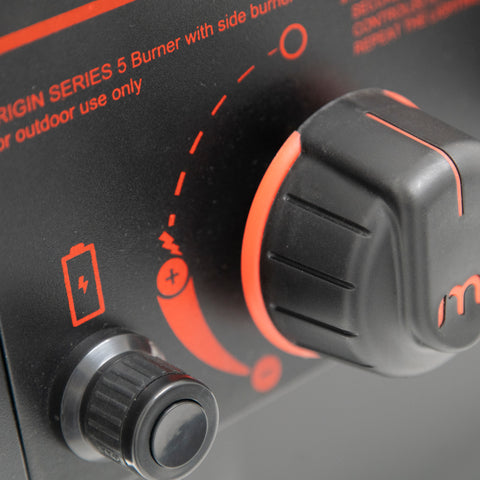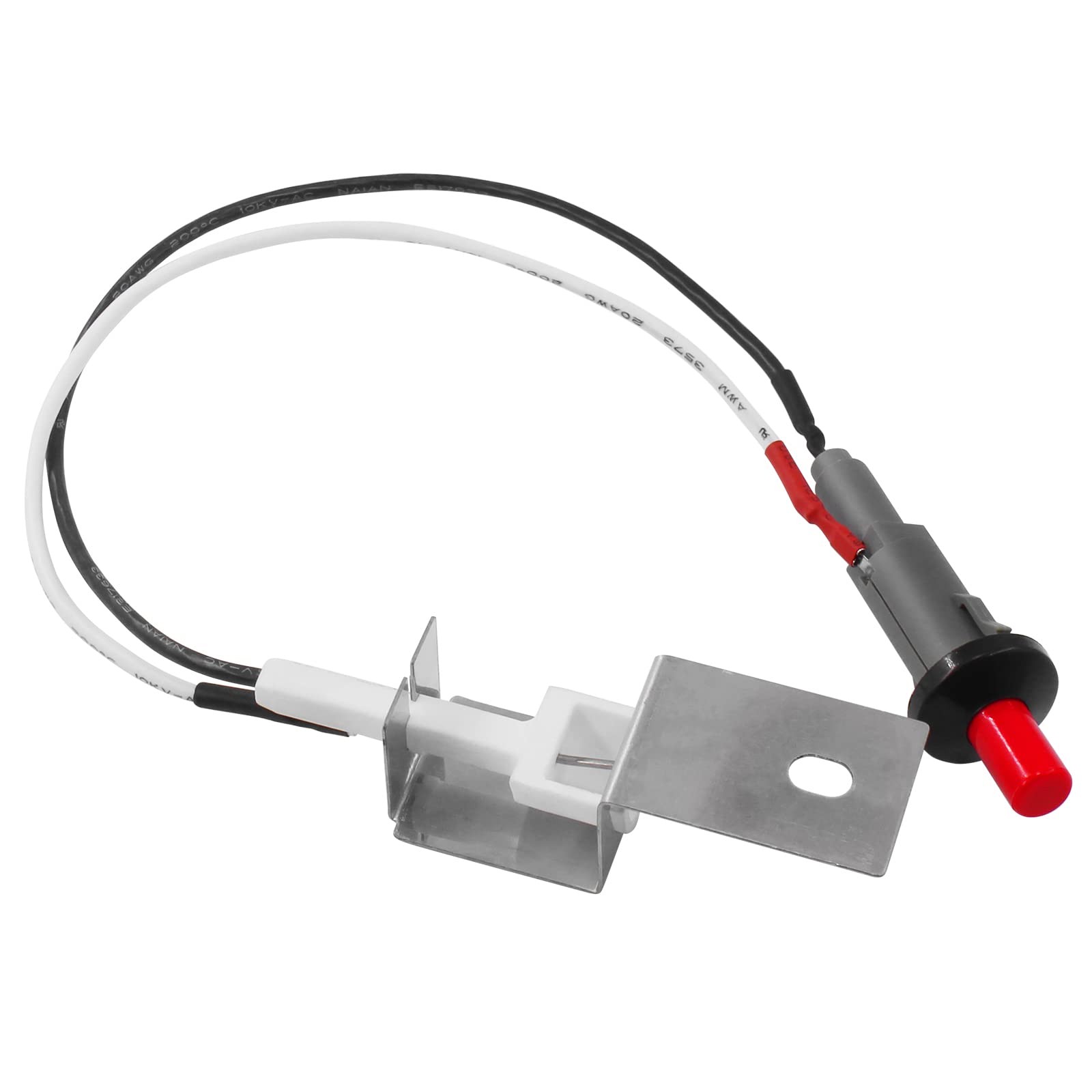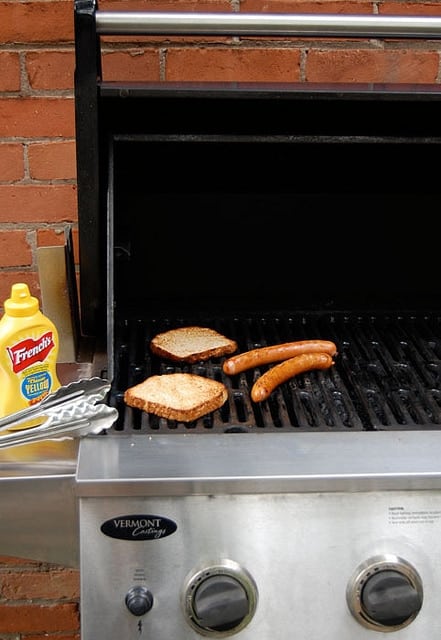
Introduction
Have you ever experienced the frustration of your gas grill igniter not working right when you’re ready to start a BBQ? It can definitely put a damper on your plans. In this article, we will explore why your gas grill igniter might not be working and provide some tips on how to fix it.
Why A Grill Igniter Is Crucial For Starting Your BBQ
The igniter of your gas grill is often overlooked, but it plays a crucial role in getting your barbecue started. It is responsible for creating a spark that ignites the fuel and starts the flame. Without a working igniter, you may have difficulty starting the grill, leading to frustration and delays in your grilling plans.
A properly functioning igniter allows you to quickly and easily start your gas grill, saving you time and effort. It ensures that you can instantly fire up your grill and start cooking without any hassle.
The Importance Of Troubleshooting Ignition Problems
When your gas grill igniter is not working, it is important to troubleshoot the problem and fix it as soon as possible. Ignition problems can be caused by a variety of factors, including a dirty or worn-out igniter, loose or damaged wiring, or a faulty spark module.
By troubleshooting the issue, you can identify the root cause of the problem and take the necessary steps to fix it. Ignition problems are often relatively simple to fix, and by addressing them promptly, you can ensure that your gas grill is always ready to go whenever you want to grill.
In the next section, we will discuss some common reasons why a gas grill igniter might not be working and provide step-by-step instructions on how to troubleshoot and fix these issues. Remember, safety should always be your top priority when working with gas grills, so if you are unsure or uncomfortable with any of the troubleshooting steps, it is best to consult a professional.
Understanding Gas Grill Igniter Systems
Types Of Gas Grill Igniter Systems
There are two main types of gas grill igniter systems: electronic ignition and manual ignition.
- Electronic Ignition: This system uses a battery-powered spark generator to create a spark that ignites the gas. It is the most common type of igniter used in modern gas grills. Electronic ignition systems are convenient and reliable, as they usually provide a consistent spark with a simple push of a button or turn of a knob.
- Manual Ignition: This system requires a match or a long-handled lighter to manually ignite the gas. It is typically found in older gas grills and can be a bit more challenging to use, especially in windy conditions.
Components And Function Of The Igniter System
Regardless of the type of igniter system, the key components and their functions remain the same:
- Ignition Button/Knob: This is the part you press or turn to initiate the spark.
- Ignition Module: This component generates the electrical current needed to create the spark. In the case of electronic ignition, it is powered by batteries or electricity.
- Ignition Electrode: This metal rod is positioned in the path of the gas flow and creates a spark when an electrical current passes through it. The spark ignites the gas, starting the flame.
- Gas Flow: The ignition electrode is strategically placed in the gas flow path to ensure the spark reaches the gas for ignition.
Overall, the igniter system is crucial for starting your gas grill. It provides a convenient and safe way to ignite the gas, allowing you to start grilling without hassle.
In the following sections, we will discuss common reasons for igniter failure and provide potential fixes to get your grill back in working order. Remember to prioritize safety and consult a professional if you are unsure about any troubleshooting steps.
Understanding Gas Grill Igniter Systems
Common Issues With Grill Igniters
No Clicking Or Sparking
If you hear no clicking or sparking when trying to ignite your gas grill, but the barbecue lights with a match or lighter, the burners and gas flow are most likely functioning properly. However, the igniter itself may be the issue. Here are a few potential causes and how to fix them:- Bad spark: The ignition electrode may be dirty or wet, preventing a proper spark. Try cleaning the electrode with a soft brush or cloth and ensuring it is completely dry before attempting to ignite the grill again.- Faulty electronic ignition module: The ignition module, which generates the electrical current for the spark, may be malfunctioning. In this case, you may need to replace the ignition module. Consult your grill’s manual or contact the manufacturer for specific instructions.
Weak Or Intermittent Spark
If you notice that the spark produced by the igniter is weak or intermittent, follow these steps to troubleshoot and fix the issue:- Check the battery: If you have an electronic ignition system, make sure the battery is not running low or dead. Replace the battery if necessary.- Clean the ignition electrode: A dirty or corroded ignition electrode can result in a weak spark. Clean the electrode using a soft brush or cloth to remove any debris or buildup.- Adjust the distance: If the gap between the ignition electrode and the burner is too far, it may cause a weak spark. Consult your grill’s manual for the recommended gap distance and adjust if needed.
Faulty Electronic Ignition Module
If none of the above steps resolve the issue, it is possible that the electronic ignition module itself is faulty. In this case, you may need to replace the module. Contact the manufacturer or consult your grill’s manual for guidance on replacing the electronic ignition module.
Remember to prioritize safety when troubleshooting and working with your grill’s igniter system. If you are unsure about any troubleshooting steps or feel uncomfortable with DIY repairs, it is always best to consult a professional.

Troubleshooting Steps
Checking Gas Supply
- Ensure that the gas supply valve is fully open. – Check that the gas tank is not empty or nearly empty. – If using a natural gas grill, make sure the gas line is not obstructed or damaged.
Inspecting Igniter Wires And Connections
- Look for any loose or disconnected wires near the igniter module. – Check that the wires are securely connected to the ignition electrode and the ignition module. – If there are any damaged wires, they may need to be replaced or repaired.
Understanding Gas Grill Igniter Systems
- It is important to understand the basic components of a gas grill igniter system. – The ignition module is responsible for generating the electrical current needed for the spark. – The ignition electrode is the part that creates the spark to ignite the gas.
Common Issues With Grill Igniters
- No clicking or sparking: If you do not hear any clicking or sparking when trying to ignite your grill, the igniter may be the issue. – Weak or intermittent spark: If the spark produced by the igniter is weak or inconsistent, there may be an underlying problem. – Faulty electronic ignition module: If none of the troubleshooting steps resolve the issue, it is possible that the ignition module itself is faulty.
How To Fix Common Igniter Issues
- Bad spark: Clean the ignition electrode with a soft brush or cloth and ensure it is dry before attempting to ignite the grill again. – Faulty electronic ignition module: If the igniter still does not work after cleaning the electrode, the module may need to be replaced. – Weak or intermittent spark: Check the battery if you have an electronic ignition system and clean the ignition electrode if it is dirty or corroded. Adjust the gap distance if necessary.
Remember to prioritize safety when working with the grill’s igniter system. If unsure or uncomfortable with troubleshooting, consult a professional.
Cleaning And Maintaining The Igniter
Removing Debris And Grease Buildup
To ensure the proper functioning of your BBQ igniter, it is important to regularly clean and maintain the electrode and other components. Here are the steps to clean and maintain your gas grill igniter:
- Start by turning off the gas supply and disconnecting the propane tank or shutting off the natural gas valve.
- Remove the burner covers and grill grates to access the igniter.
- Use a brush or cloth to remove any debris, such as dirt, grease, or food particles, that may have accumulated around the igniter module and electrodes.
- Pay special attention to cleaning the electrode tip, as this is where the spark is produced. Remove any grease or corrosion by gently scrubbing the tip with a brush or cloth.
- If necessary, you can use a small amount of rubbing alcohol on a cotton swab or tissue to clean the electrode tip more thoroughly.
- Once the debris and grease buildup have been removed, make sure to wipe the area clean and dry before reassembling the grill.
Cleaning The Electrode Tip
To further ensure the effectiveness of your gas grill igniter, it is essential to clean the electrode tip regularly. Here is a step-by-step guide on how to clean the electrode tip:
- Disconnect the gas supply and remove the burner covers and grill grates.
- Locate the electrode, which is usually a small metal rod near the burner.
- Use a soft brush or cloth to gently scrub the electrode tip, removing any dirt or corrosion that may have accumulated.
- If the electrode tip is heavily corroded, you can soak it in a solution of equal parts water and vinegar for a few minutes before gently scrubbing it.
- After cleaning the electrode tip, make sure to dry it thoroughly before reassembling the grill.
By following these steps and regularly cleaning and maintaining your gas grill igniter, you can ensure that it functions properly and ignites the gas efficiently. Remember to always prioritize safety and consult a professional if you are unsure or uncomfortable with troubleshooting the igniter system.
Replacing The Igniter Battery
Identifying The Battery Type
To replace the battery in your gas grill igniter, you first need to identify the type of battery it uses. Most gas grill igniters use a AA or AAA battery, but it’s always a good idea to check the owner’s manual or the manufacturer’s website for specific instructions.
Step-by-step Guide To Battery Replacement
Once you have determined the correct battery type, you can follow these steps to replace the old battery with a fresh one:
- Turn off the gas supply and disconnect the propane tank or shut off the natural gas valve for safety.
- Locate the igniter button cover on the grill. It is usually marked with a spark symbol.
- Using a counterclockwise motion, turn the igniter button cover to remove it from the grill.
- Take out the old battery from the igniter button compartment.
- Insert a new battery of the same type into the compartment, making sure that the positive and negative ends are aligned correctly.
- Put the igniter button cover back on by turning it clockwise until it is securely in place.
- Test the igniter by pressing the button to see if it sparks and lights the grill.
Troubleshooting Tips
- If the igniter still does not work after replacing the battery, check for loose or disconnected wires and make sure they are properly connected.- If the wires are intact and connected, the igniter module may be faulty and need to be replaced. Consult the owner’s manual or contact the manufacturer for further assistance.
Remember, regular cleaning, maintenance, and battery replacement are essential to keep your gas grill igniter in proper working condition. By following these steps, you can ensure that your grill ignites the gas efficiently and enjoy hassle-free grilling sessions.

Replacing A Faulty Igniter
How To Determine If The Igniter Needs Replacement
If you have tried replacing the battery in your gas grill igniter but it still does not work, there may be a problem with the igniter itself. Here are a few signs that indicate the igniter needs to be replaced:- The igniter button does not spark or create a visible spark- The igniter sparks inconsistently or weakly- The igniter does not light the grill even when the gas supply and fuel source are working properly
Step-by-step Guide For Replacing The Igniter
If you have determined that your gas grill’s igniter needs replacement, follow these steps to install a new one:
- Turn off the gas supply and disconnect the propane tank or shut off the natural gas valve for safety.
- Locate the igniter assembly on the grill. It is usually near the burner and connected to a wire.
- Disconnect the wire from the igniter by carefully removing the connector or clip.
- Remove the old igniter from its mounting bracket or holder.
- Insert the new igniter into the mounting bracket or holder, making sure it is securely in place.
- Reconnect the wire to the new igniter by attaching the connector or clip.
- Test the new igniter by turning on the gas supply and pressing the igniter button. It should spark consistently and light the grill.
Troubleshooting Tips
- If the new igniter still does not work, check for any loose or disconnected wires and ensure they are properly connected.- If all connections are secure and the igniter still does not work, there may be an issue with the electronic ignition module. Consult the owner’s manual or contact the manufacturer for further assistance.
Remember, regular maintenance and timely replacement of faulty components are important to keep your gas grill igniter functioning properly. By following these steps, you can ensure that your grill ignites reliably and enjoy hassle-free grilling experiences.
Troubleshooting Tips For Manual Lighting
Using Alternative Lighting Methods
- If your gas grill’s igniter is not working, you can still manually light your grill using alternative methods. Here are a few options to consider: – Use a long-reach lighter or matches to light the burner directly. – Use a chimney starter to ignite charcoal and then transfer the hot coals to the grill. – Use a handheld blowtorch or propane torch to ignite the burners.
Ensuring Safety When Manually Lighting The Grill
- Manual lighting requires extra caution to ensure safety. Follow these safety tips: – Read and understand the manufacturer’s instructions for manual lighting. – Keep the grill lid open when manually lighting to prevent gas buildup. – Use long-reach lighters or matches to avoid burning your hand. – Stand back and keep your face away from the grill when igniting the burners. – If using a blowtorch or propane torch, follow the manufacturer’s safety guidelines and keep a fire extinguisher nearby.
Remember, manual lighting is a temporary solution and it’s recommended to replace a faulty igniter for reliable and safe grilling experiences. By following these troubleshooting tips and taking necessary safety precautions, you can continue using your grill even when the igniter is not working.
Troubleshooting Tips For Manual Lighting
Using Alternative Lighting Methods
- If the gas grill’s igniter is not working, users can still manually light the grill using alternative methods. Consider the following options: – Use a long-reach lighter or matches to directly light the burner. – Utilize a chimney starter to ignite charcoal and then transfer the hot coals to the grill. – Apply a handheld blowtorch or propane torch to ignite the burners.
Ensuring Safety When Manually Lighting The Grill
- When resorting to manual lighting, it is crucial to prioritize safety. Adhere to the following safety tips: – Carefully read and comprehend the manufacturer’s instructions for manual lighting. – Keep the grill lid open during the manual lighting process to prevent gas buildup. – Utilize long-reach lighters or matches to avoid burning one’s hand. – Maintain a safe distance and refrain from placing the face near the grill when igniting the burners. – If using a blowtorch or propane torch, diligently follow the manufacturer’s safety guidelines and have a fire extinguisher nearby.
Remember, manual lighting is a provisional solution, and it is advisable to replace a faulty igniter for reliable and safe grilling experiences. By following these troubleshooting tips and taking necessary safety precautions, users can continue using their grill even when the igniter is not working.
Summarizing The Troubleshooting Process
To summarize the troubleshooting process for a gas grill igniter that has stopped working:1. Begin by determining if there is a hard snap or continual clicking sound when attempting to ignite the grill.2. If there is no sound, proceed to troubleshooting the igniter parts by referring to the manufacturer’s instructions or contacting a specialist such as The BBQ Depot at 1-877-983-0451 for expert guidance.3. If a sound is heard but the grill does not light, the issue may lie with the burner rather than the ignition system. In this case, consider inspecting and potentially replacing the burner.
Tips For Preventive Maintenance To Avoid Future Ignition Problems
To minimize the likelihood of ignition problems with a gas grill, it is essential to practice preventive maintenance. Here are some tips to consider:- Regularly clean the burners to prevent blockages and ensure proper gas flow.- Check and clean the igniter electrode, making sure it is free from dirt and debris.- Inspect and replace any worn-out ignition wires or damaged components.- Protect the grill from the elements by using an all-weather cover, especially when storing it outdoors.- Follow the manufacturer’s recommended maintenance schedule and guidelines for your specific grill model.
By adopting these preventive maintenance practices, grill owners can promote optimal performance and extend the lifespan of the ignition system, reducing the likelihood of future issues.
Conclusion
In conclusion, when faced with a gas grill igniter that has stopped working, there are manual lighting options available to continue enjoying grilling. It is essential to prioritize safety when resorting to manual lighting and to consider replacing a faulty igniter for long-term reliability. Following the troubleshooting tips discussed and practicing preventive maintenance can help grill owners address the issue and prevent future ignition problems. By taking these steps, individuals can continue to savor their outdoor grilling experiences.
Frequently Asked Questions about Grill Igniter Not Working: Troubleshooting BBQ Starters
- Q: How do I know if my grill igniter is not working?
A: If your grill fails to ignite despite pressing the ignition button or using a match, it is likely that the igniter is not functioning properly. - Q: What are the potential reasons for a grill igniter not working?
A: Several factors can lead to a malfunctioning grill igniter. The most common ones include a defective battery, a faulty ignition switch, worn-out ignition electrodes, or a clogged or damaged gas supply line. - Q: How can I troubleshoot a grill igniter that is not working?
A: Start by checking the battery in the igniter, replacing it if necessary. Ensure the battery is properly inserted and has a good connection. If the battery is fine, examine the ignition switch for any visible damage and, if needed, replace it. Clean the ignition electrodes gently with a brush or a soft cloth to remove any residue or dirt. If the issue persists, inspect the gas supply line for any blockage or damage. - Q: What should I do if the igniter’s battery is dead?
A: If the igniter’s battery is dead, replace it with a new one. Typically, grill igniters use AA or AAA batteries, but consult your grill’s manual for specific battery requirements. - Q: Can I manually light the grill if the igniter is not working?
A: Yes, you can manually light the grill using a long match or a grill lighter. Refer to your grill’s manual for instructions on how to do this safely. - Q: What if my grill igniter is sparking but the grill won’t light?
A: If the igniter is sparking but the grill doesn’t light up, it could indicate a clogged or damaged gas supply line. Check for obstructions such as spider webs or debris in the gas burner tubes. Clean them carefully or contact a professional for assistance. - Q: Is it possible for the igniter electrode to wear out?
A: Yes, over time, the igniter electrode can wear out from repeated use. If you notice signs of damage or discoloration, it may be necessary to replace the electrodes. Consult your grill’s manufacturer or a professional for guidance. - Q: Should I attempt to fix the grill igniter myself?
A: If you have experience and feel comfortable working with grills and ignition systems, you can try troubleshooting and fixing the issue yourself. However, if you are unsure or unfamiliar with the process, it is recommended to consult a professional for assistance to avoid any potential risks or damage to your grill. - Q: What if none of the troubleshooting steps work?
A: If you have exhausted all troubleshooting steps and the grill igniter still doesn’t work, it may be best to consult a professional grill technician. They can diagnose the issue accurately and provide the necessary repairs or replacements to get your grill igniter working again.
NOTE: Always prioritize safety when troubleshooting grill igniters or any other grill-related issues. If you have concerns or doubts, seek professional assistance.

We are family-owned and operated. We love to serve coffee to our community that loves to drink it! We opened in December 2017 and are always expanding and evolving. We strive to offer a relaxing and comfortable gathering place for our customers. We not only serve delicious coffee but a full breakfast and lunch menu as well. You can also order ONLINE through our website or call ahead and pick it up right at our drive-thru window! We have a wide range of delicious baked goods, sweet treats, and a gift shop coming soon! Stop in and let us serve you!!